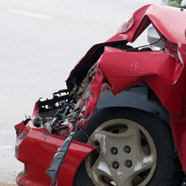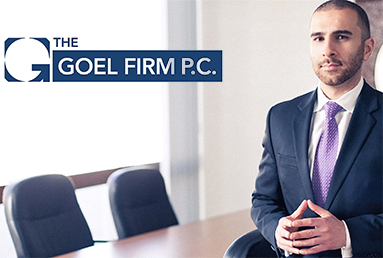
PRODUCTS LIABILITY
Products liability refers broadly to permitting plaintiffs to recover money damages from manufacturers and sellers of defective products that injure persons or property. Products liability is based upon the nature of the product defect:
(1) Manufacturing Defect;
(2) Design Defect; or
(3) Warnings or Instructions Defect.
The successful products liability plaintiff may recover all of his or her proved compensatory damages, including both economic and non-economic harm. California’s products liability laws were created in order to help insure the release of safe products, increase consumer confidence and most importantly, shift the costs of injuries caused by products to manufacturers. Manufacturers however, often fail to meet their duties and as a result, consumers and often innocent bystanders are injured by defective products. A pharmaceutical company designs an unsafe drug. A car parts manufacturer makes faulty brakes. A toy is manufactured with hazardous material. A power tool lacks sufficient warning labels. A tire maker designs a model with an excessive and dangerous rate of thread pealing. An ATV manufacturer builds a vehicle with defective transmission. As you can tell, there are many situations where a manufacturer can fail to meet its responsibilities to create safe products. In such situations it is essential to seek counsel as soon as possible.
● Manufacturing Defect
The most common case of a products liability claim involves the aberrational mass-produced item that has come off the assembly line different from and often more dangerous than the intended product. The defect involved in such a claim is generally latent but if the claim is litigated, the defect generally becomes apparent in the flawed unit by the time of trial. Although the potential cases for a manufacturing defect may be endless, examples include the following: (1) a swing set with a latent cracked chain, (2) a tainted batch of cough syrup containing a poisonous or dangerous substance, or (3) a moped missing its safety brake pads.
● Product Design Defect
As opposed to a manufacturing defect where some error or mishap occurred in the manufacturing process, a design defect involves a claim that an entire line of products is inherently dangerous, regardless of the fact that the injury-causing product was perfectly made according to the manufacturer’s specifications. In other words, the actual planning and designing phase of the product led to the condition not necessary a deviation in the manufacturing process. Examples of a design defect may include: (1) a tendency in particular sports-utility vehicle to flip over while turning a corner at high speeds, (2) a type of sunglasses that do not protect the eyes from ultraviolet rays as claimed by the product, (3) a specific line of electric blankets that tend to electrocute users when set to a high temperature.
● Safety Instructions and Warnings
Product instructions and warning labels help reduce risk by instructing users how to obtain the benefits from a product’s intended use and by alerting users to the dangers of using the product in ways unintended by the manufacturer. But when a manufacturer fails to provide adequate warnings or instructions about a product’s proper use, it may be held liable for injuries caused by such a failure. Failure-to-warn claims typically involve a product that is dangerous in some way that’s not obvious to the user or that requires the user to exercise special precautions or diligence when using it. In many safety warnings cases, a determination of liability may be based on the following factors: (a) the warning must adequately indicate the scope of the danger, (b) the warning must reasonably communicate the extent or seriousness of the harm that could result from misuse of the drug, (c) the physical aspects of the warning must be adequate to alert a reasonably prudent person to the danger, (4) a simple directive warning may be inadequate when it fails to indicate the consequences that might result from failure to follow it, and (5) the means to convey the warning must be adequate.
Examples of a failure-to-warn claim include: (1) a pharmaceutical product that does not include on its label a warning that it may cause dangerous side effects if taken in combination with a commonly used over-the-counter drug, (2) a corrosive paint-removing chemical that is sold without adequate instructions for safe handling and use, (3) a perfume bottle that fails to warn of the perfume’s flammability.
RECOVERABLE DAMAGES:
In an action to recover for an injury caused by a defective product, a victim’s damages may typically include hospital and medical expenses, pain and suffering, lost earnings, and impaired earning capacity. However, a victim may be able to recover punitive damages if the defendant’s conduct was aggregious. This means the victim will have to demonstrate the defendant’s willfulness, wantonness, gross negligence, or reckless or conscious disregard for the safety of consumers.
● Medical Expenses
Moderate and serious injuries caused by a defective product can lead to significant medical bills. For example, hospitalization at a trauma center for serious injuries can cost hundreds of thousands of dollars. An attorney dedicated to personal injury and defective product claims will help you recover the costs for any hospital stay, surgery, doctors’ visits, diagnostic tests, physical and rehabilitative therapy, and chiropractic care. You may further be entitled to the costs of future medical care, if your injuries require ongoing treatment.
● Pain and Suffering
A defective product may inflict a wide range of injuries, whether they are temporary, longer-term, or permanently disabling. The law allows for compensation for the pain and suffering associated with such accident injuries, yet it does not provide a fixed formula to calculate that type of compensation. To recover the maximum amount that your injuries warrant, one will need the help of a dedicated personal injury and defective product attorney who is equipped with the knowledge, resources and experience to best evaluate your claim.
● Loss of Wages
Time lost at work due to injuries inflicted by a defective product can be significant and have serious ramifications on your finances and family responsibilities. If your injuries prevent you from working, then all your lost wages may be included in any claim for recovery against a company, distributor and/or retailer. Even if you used sick leave or vacation time during the recovery period, reimbursement may be available in your recovery. What if your injuries leave you permanently disabled and unable to work ever again? In conjunction with this firm’s experts, a personal injury lawyer can calculate your future losses and recover for your diminution in lifetime earning capacity.
● Loss of Consortium
Loss of consortium is cause of action that may be brought by a spouse of the injured party for loss or harm he or she suffered as a result of bodily injury caused by the defective product.
● Wrongful Death
If a defective product resulted in the death of a party, then there may be a cause of action for wrongful death. A wrongful death action arises in favor of certain statutory outlined survivors of a decedent of an accident. The survivors who are entitled to bring a wrongful death claim include but are not limited to the decedent’s surviving spouse, domestic partner, children, or issue of deceased children.
● Punitive Damages
A plaintiff injured by a defective product can recover punitive damages from a manufacturer or supplier of the product by proving the defendant’s malice (or oppression or fraud). The Ford Pinto case is a well-known cited example of when punitive damages were awarded by a jury. The plaintiff in the case alleged a tendency in the Ford model to explode in rear-end collisions. Internal Ford Motor Company documents proved that Ford knew of the weakness in the fuel tank before the vehicle was placed on the market. However, Ford did not change the design because its cost-benefit study suggested that it would be “cheaper” for Ford to pay liability for burn deaths and injuries rather than modify the fuel tank to prevent the fires.
WHAT IF YOU HAVE BEEN INJURED BY A DEFECTIVE PRODUCT?
If you or someone close to you has been injured by a product you suspect to be defective or failed to provide adequate warning, please take the following steps:
(1) If reasonable, preserve the suspect product or item.
(2) Keep any of the product’s packaging, instruction manuals, labels and any other enclosed items.
(3) If reasonable, maintain the product in the same condition it was at the time of injury.
(4) Receive prompt medical attention for yourself or anyone injured by the product. If an injury requires emergency care, immediately call an ambulance for transport to a hospital. If the injuries do not require emergency care, visit an urgent care medical center or arrange to be seen by your regular physician. Some product injuries, including serious ones, may be latent and hence it is essential to be examined by a medical care provider as soon as possible.
(5) Immediately contact a dedicated Products Liability Attorney. It is crucial to immediately seek counsel so that any evidence available is immediately and appropriately gathered before it is lost or destroyed, and that any possible witnesses are found and interviewed while their recollections are still fresh and useful.
-
Client Testimonials
See What Our Clients Have
To Say -
The Goel Firm Blog
Personal Injury & Insurance
News and Discussion. -
Free case evaluation.
Let Us Review
Your Case
The Goel Firm P.C.
9440 S. Santa Monica Boulevard Suite 301
Beverly Hills, California 90210
T: 424 281 4377
F: 888 800 4598
info@goelfirm.com









